In late August I got an email from ESPN asking if I was available October 18 and 19. They needed someone to shoot portraits at Big 12 Basketball Media Days in Kansas City. The short answer was yes, I was. And I did, but it turned out to be both a lot more work, and a lot more fun, than I expected.
“Media Days” are when all the teams from that conference show up with the coach and a few key players to speak with the media (women’s teams one day, men’s the other). Mixed into that day are several video shoots as well as a photo session (me). The original request to do “portraits” turned into portraits of each player and coach on both gold and white backdrops, then various posed shots on white seamless (a 9-ft wide by 36-ft long roll of heavy paper hung from a backdrop stand). The first challenge was figuring out exactly what gear I’d need to do all that.
For years now I’ve been using a number of Flashpoint battery-powered strobes, and thought they’d be perfect for this. I’d use two of the eVOLV 200 units for the gold-backdrop shoot, one in a softbox and the other to light the background. Hanging a white reflector to the side opposite the softbox would bounce back enough light to fill in what otherwise would be heavy shadows on that side of the subject’s face. However, the shoots on the white seamless background, covering a larger area, would require more power. Using a pair of Flashpoint XPLOR 600 strobes (three times the power of the smaller units), I’d mount them on heavy stands inside Westcott Apollo Orb softboxes. One at each corner of the seamless, up high, would provide even light over a large area and prevent heavy shadows behind the subjects.
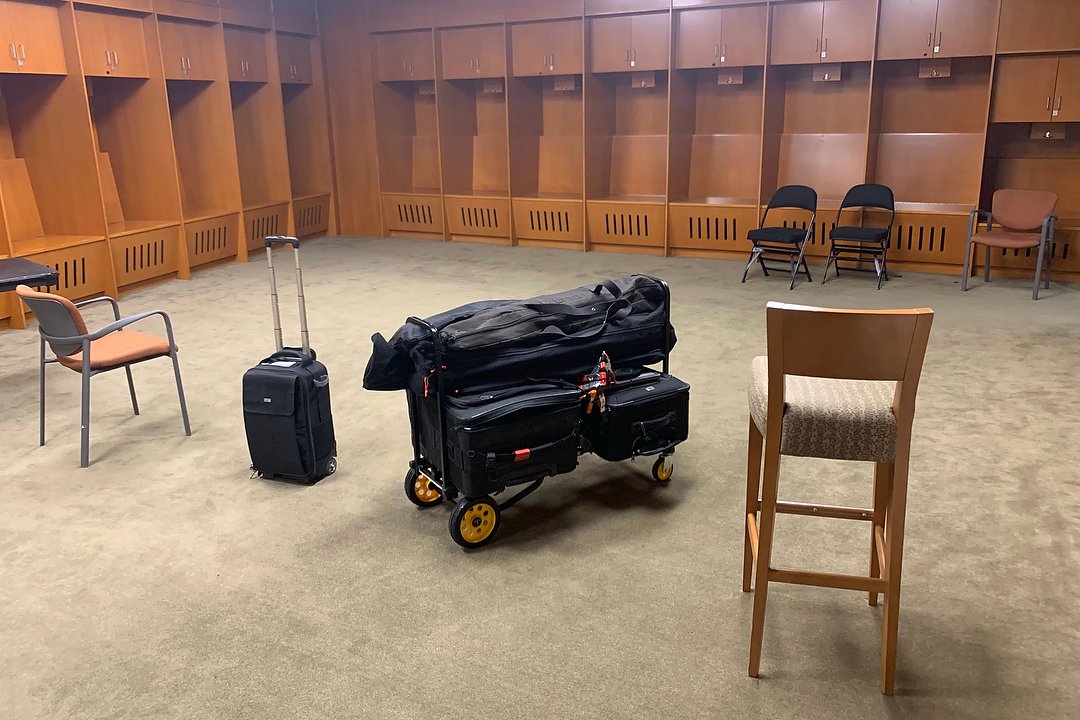
Here’s the gear I hauled in and the space I was given to work with.
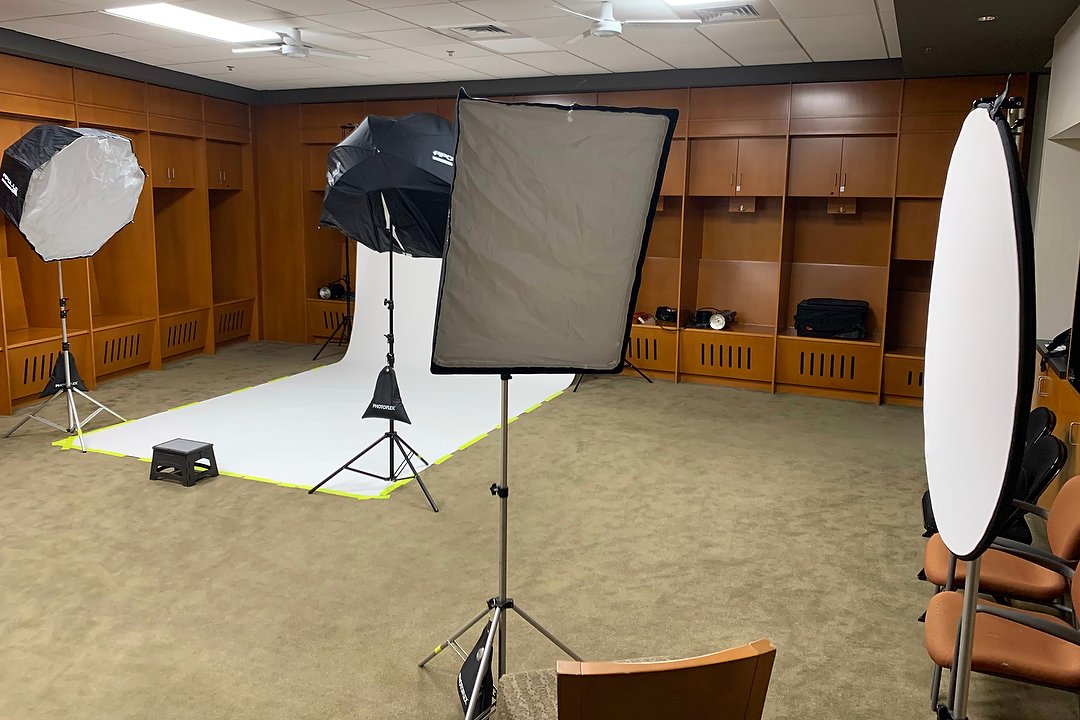
And here’s that same space after setup. The two big lights, at back, are the XPLOR 600’s inside Westcott Apollo Orb soft boxes. I really like these softboxes because they collapse like an umbrella and have a silver-surface interior. That means I can bounce the light into the back of them, which then takes advantage of the entire surface area of the white diffusion panel in front.
Being battery-powered meant no need to run AC cords (less chance of anyone tripping), and the four strobes could be controlled wirelessly from a single remote on top of my camera, turning each pair on or off as needed. That remote also let me change power levels on the fly, so I could make small adjustments as necessary. I also brought along the chargers for the four flashes, so they could be recharged overnight on location. Finally, I also carried in a pair of high-power Bowens monolights (AC-powered flashes), as backups in case any of my battery-powered units failed. Thankfully, I never needed those two.
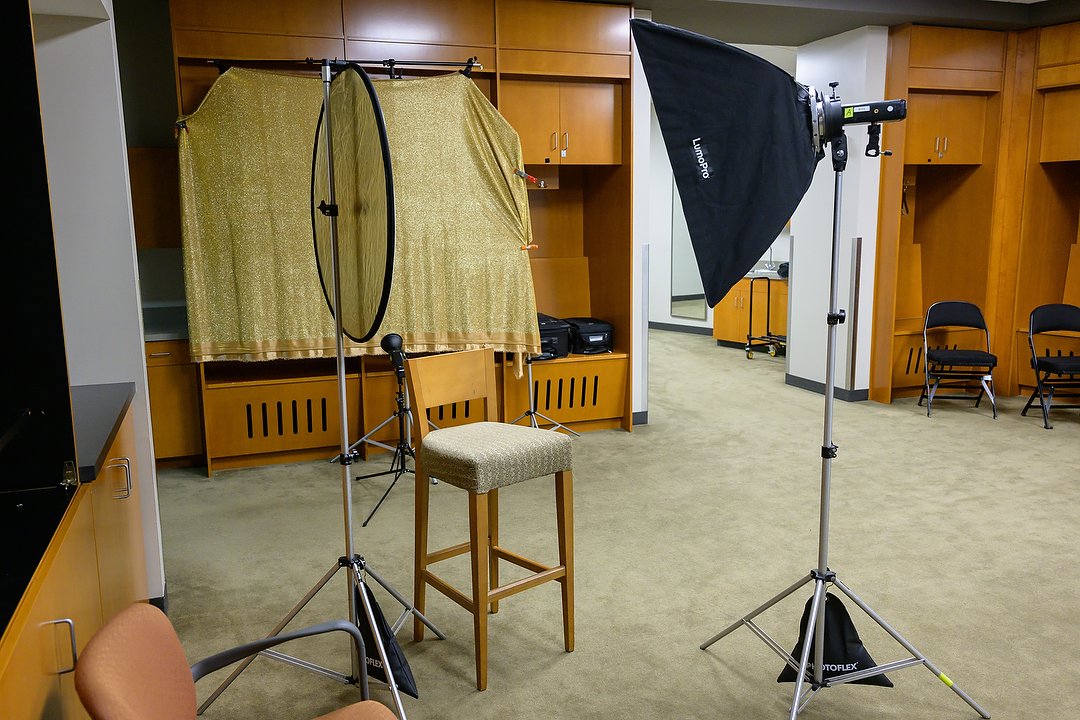
Here you can see the gold portrait setup. One Flashpoint eVOLV 200 strobe is in the softbox at right, the second being used to light the background (it’s on a small stand under the backdrop). By keeping both the softbox and the reflector close to the subject, I’m taking advantage of their surface area to create “soft” light (better for portraits). If I had them further away, the resulting light would have a “harder” look to it, with harsher shadows. And having the subjects sit on the stool kept their heads and shoulders within the area of the backdrop.
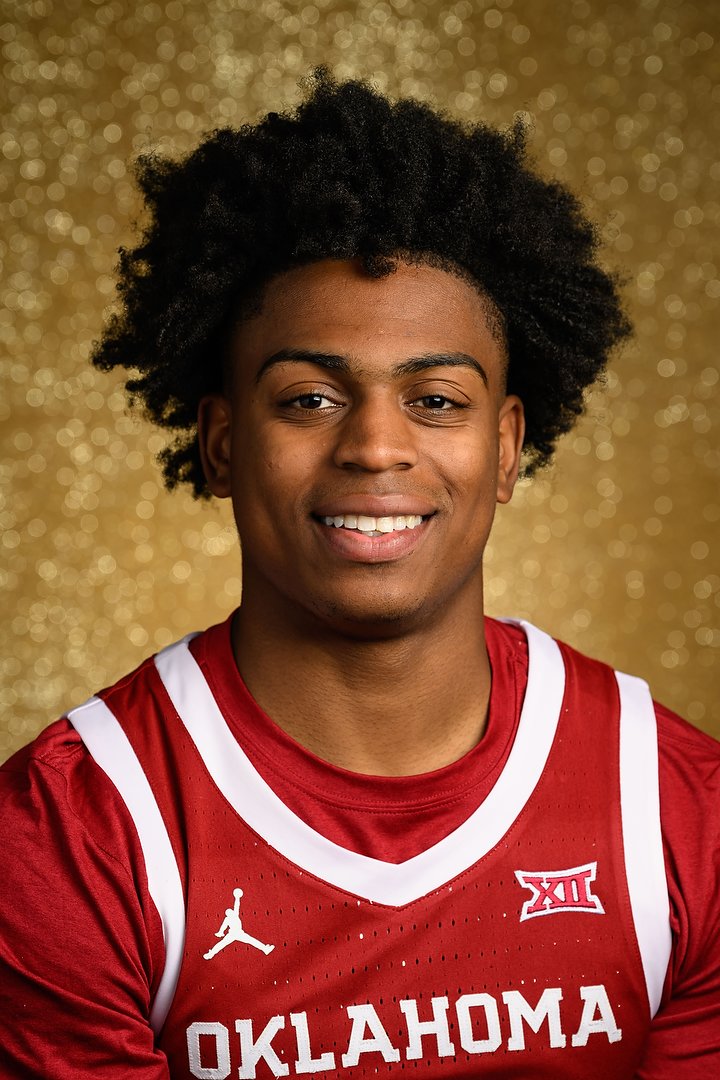
In this portrait of Oklahoma’s Grant Sherfield, you can see the nice, soft created by the softbox to the right, and how the reflector on the left bounces back just enough light to open up the deeper shadows on that side of his face. By using the 24-120mm lens at about 100mm focal length and f/5.6, and setting up the background a good distance behind him, I’m able to force it nicely out of focus and create specular highlights out of the bright spots.
When using flash, I almost always shoot in Manual exposure so I can control how much – or even whether – the ambient (available) light plays a role in the picture. In this case I wanted to overpower the room lighting so my flashes were the only light source for the photos. That insured I wouldn’t have any color cast problems created by the room’s lights. I used a shutter speed of 1/200, then varied the ISO from 80-160 and aperture from f/5.6 to f/8 based on the position of the lights and the subject(s).
The camera I used was a Nikon Z 9 with 24-120mm f/4 lens shooting RAW files. For backup, I had it writing those files to not just one, but both CFexpress cards in the camera. I rarely set the camera to do this, as I’ve never had a card failure. But again, a re-shoot would be impossible, so this gave me another level of redundancy. And as a backup in case of camera issues, I also had a Nikon Z 6 II in the bag with a second lens. Knowing I’m prepared to handle problems that might arise helps me sleep better at night. Now for the work/fun part.
The “day” (time I had to shoot) lasted a full five hours, as I’d get each of the ten coaches and teams for about 25-minutes at a time, start to finish. That is, if they were on time. Oh, and the players would usually they’d need to change into their uniforms too. Which meant I generally had about 20-minutes to do the two series of portraits and the rest of the photos. Not surprisingly, at the end of the first day I was exhausted. But it was fun too.
I was told that after the portraits, “let the players have fun.” Which meant asking them what poses they’d like to do, both individually and as a group. Sometimes I’d have to suggest things, other times they came up with their own ideas. And that was the best part of each day. Those 10-15 minutes with each team made all the rest of the work worthwhile.
The first day I shot about 600 frames over the five hours, the second day nearly 900. After it was all done, I had to deliver about a hundred of my favorites, as JPEGs, and then upload each day’s entire RAW shoot (thankfully I have high-speed internet!).
To give you an idea of what I did in those ten hours over two days, here are some of my favorites (All photos are straight from the camera, no editing applied. Since that’s how ESPN would see them, as RAW files, I wanted the pictures to look good right out of the camera):
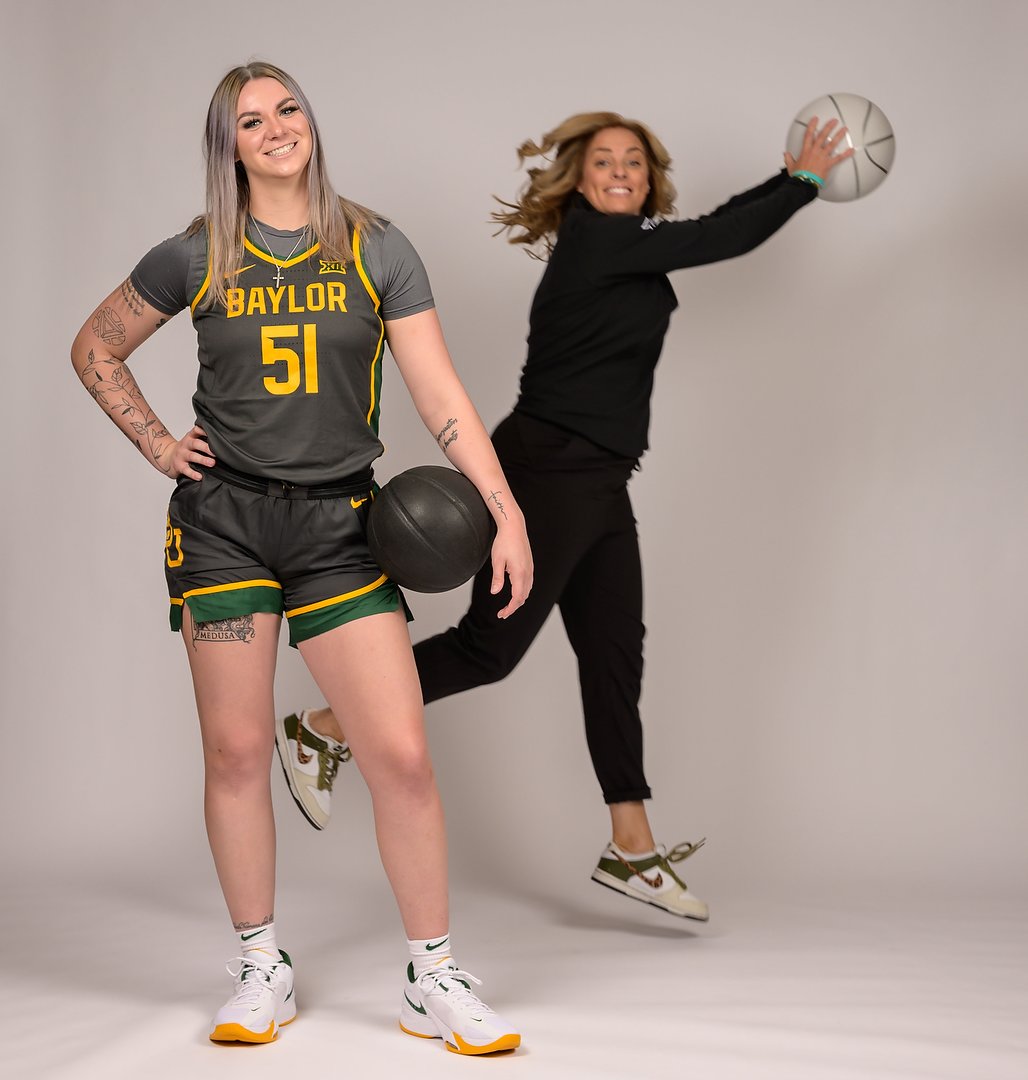
If the coach decides to photo bomb a shoot, I won’t complain. That’s just what Baylor Coach Nicki Collen did as I was photographing Caitlin Bickle.
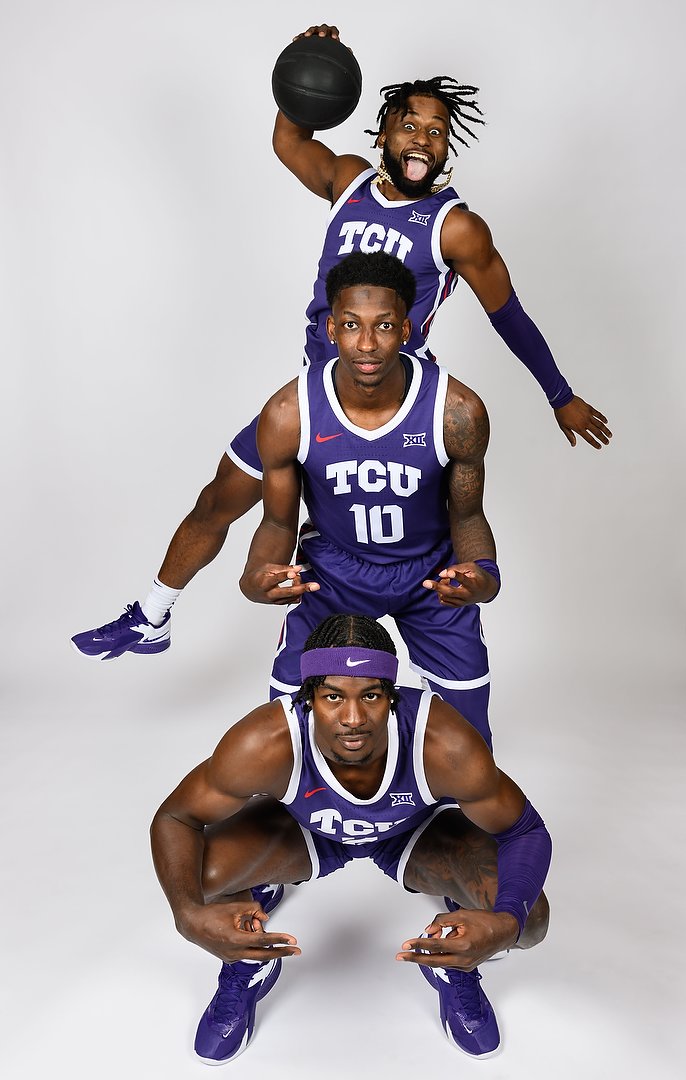
And again, some teams were pretty creative in helping me make interesting photos in a limited space. In this case it’s TCU, and front to back: Emanuel Miller, Damion Baugh and Mike Miles Jr. (doing great job with the jump and face).
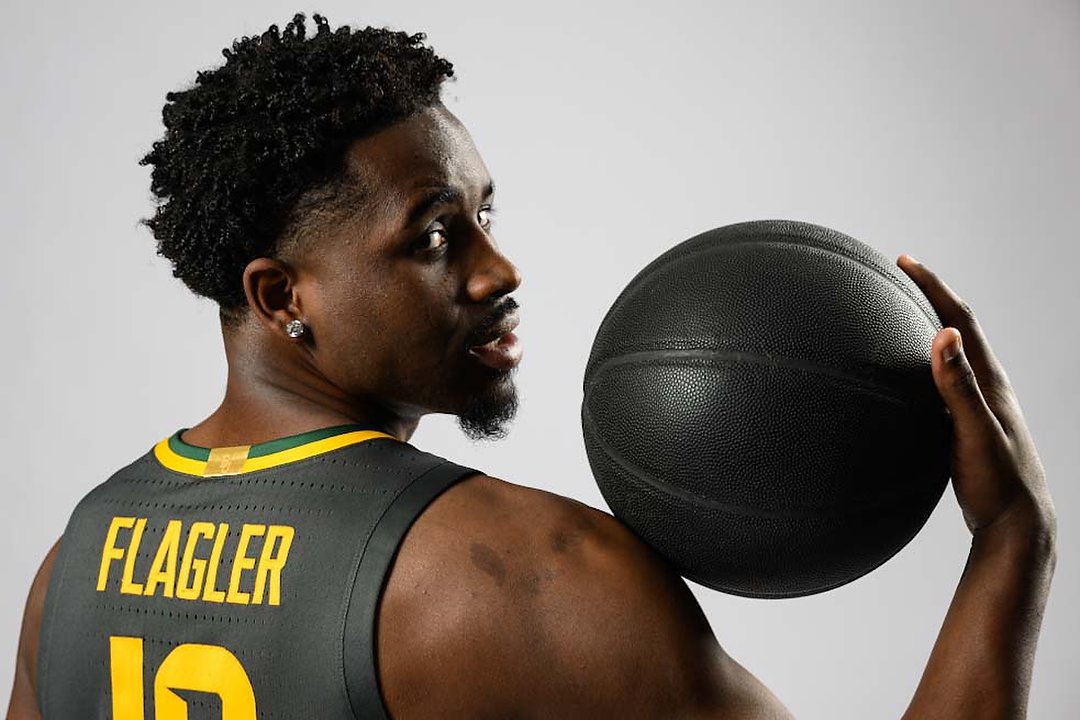
Occasionally I would shift the position of my lights for a different look. In this case I moved the light on my right to be on the opposite side of me from Baylor’s Adam Flagler, to create a more dramatic photo. Personally, I’d have preferred doing this with a dark background, but what the client wants, the client gets!
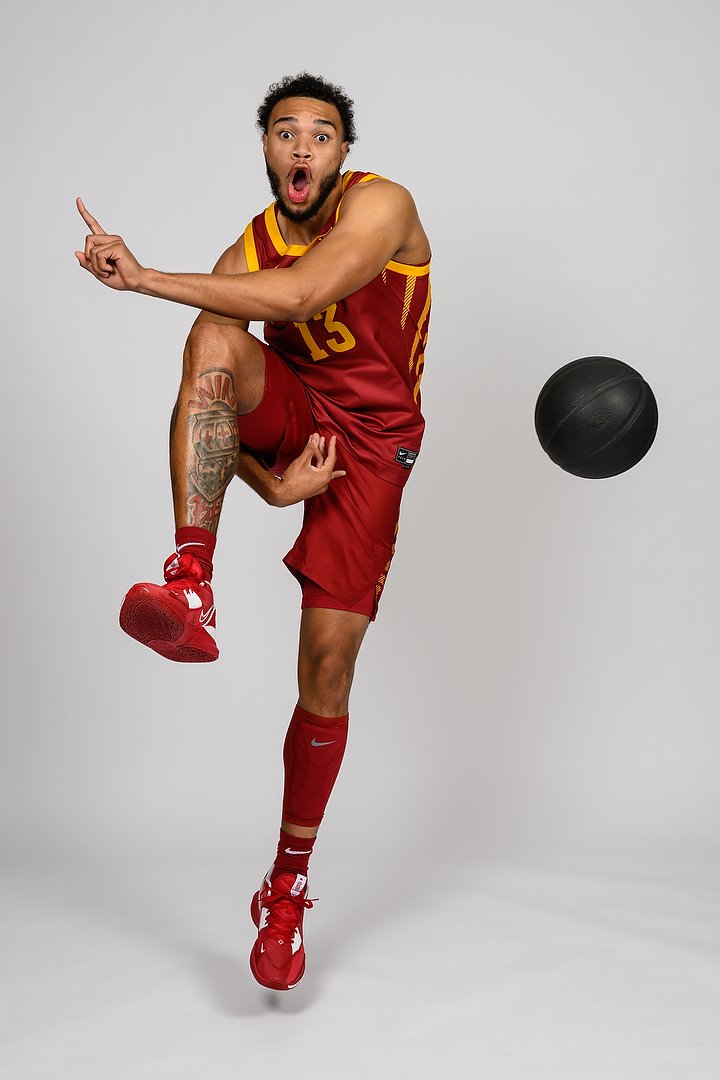
When Iowa State’s Jaren Holmes started making faces during under-the-leg jump passes, I knew we were going to have a fun photo.
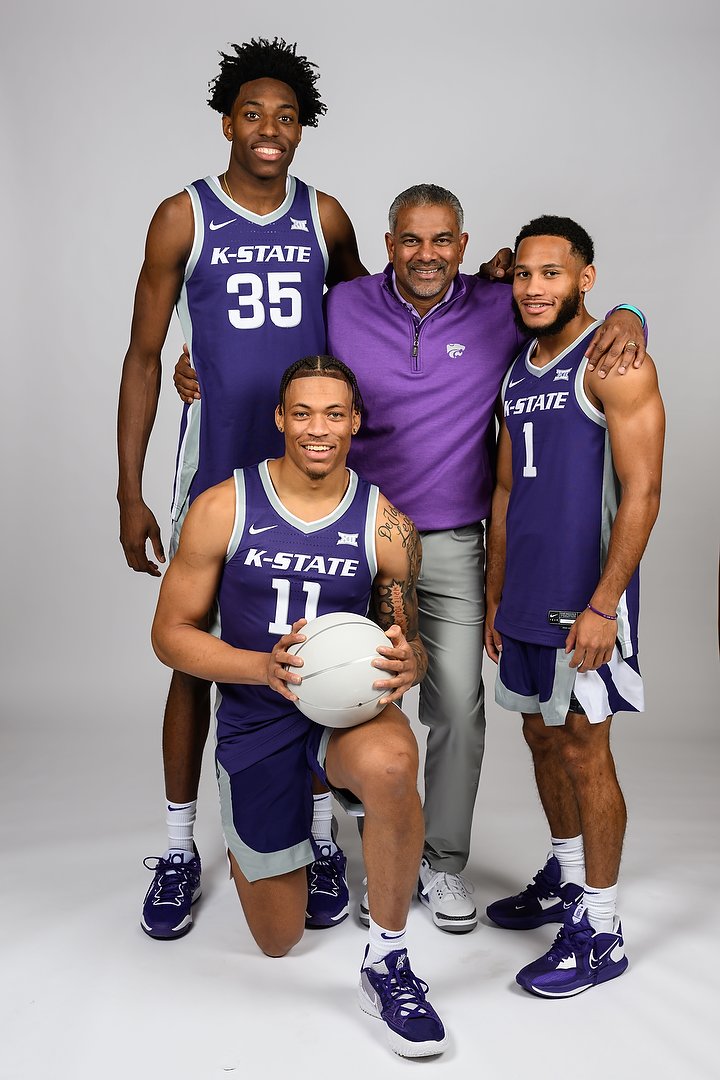
Squeezing three players and a coach into the limited space was challenging, but I managed to do it with each team. This is Kansas State and their new coach. Standing, from left: Nae’Qwan Tomlin, coach Jerome Tang and Markquis Nowell. Kneeling is Keyontae Johnson.
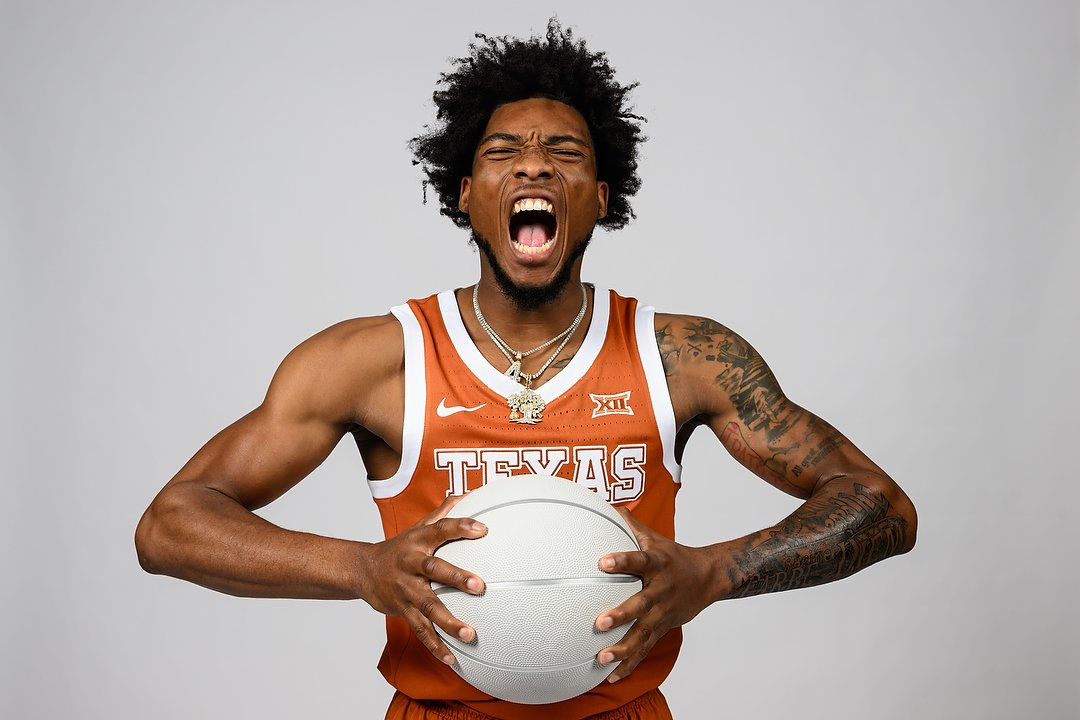
Some players wanted to bring emotion to the photos. Texas’ Tyrese Hunter was one of them, and nearly deafened me with the scream he let out.
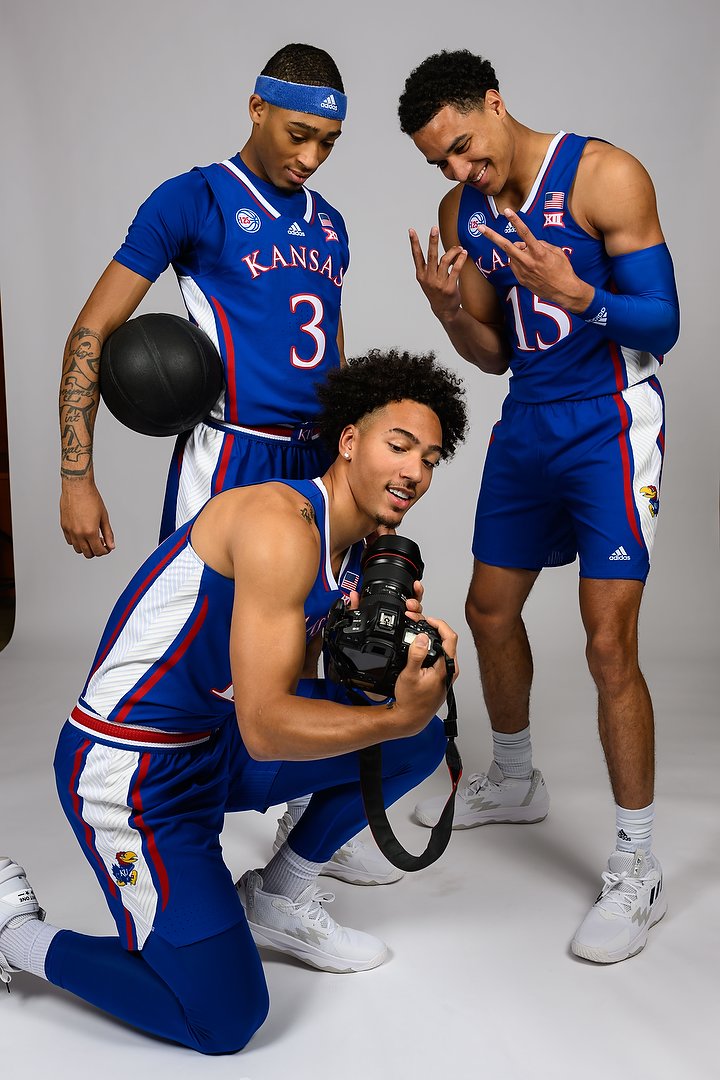
Kansas’ Jalen Wilson, kneeling, asked the social media people following them if he could borrow one of their cameras for a shot. This was the result, as three of KU’s returning National Championship team members hammed it up together. Standing, at left, Dajuan Harris and at right is Kevin McCullar. After this photo, Jalen said, “How about us doing a selfie? And that’s the photo at the top of this story.
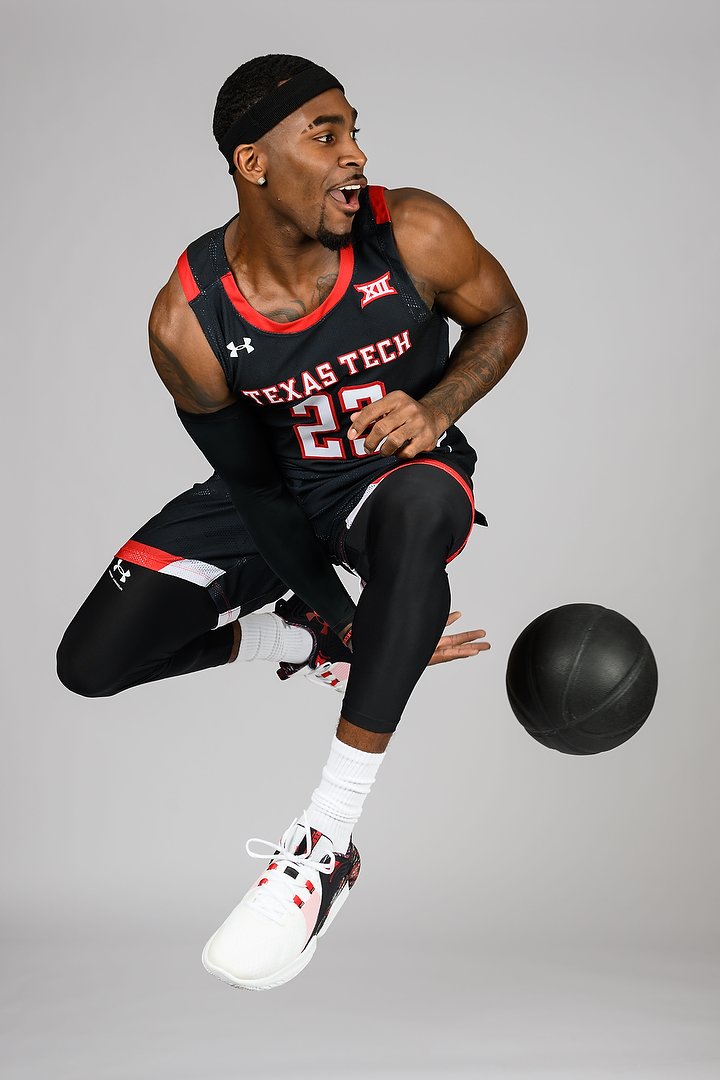
With each team I’d ask if anyone wanted to do a jump pass. Texas Tech’s De’Vion Harmon was happy to comply. I was always careful to ask them NOT to hit my light with the ball!
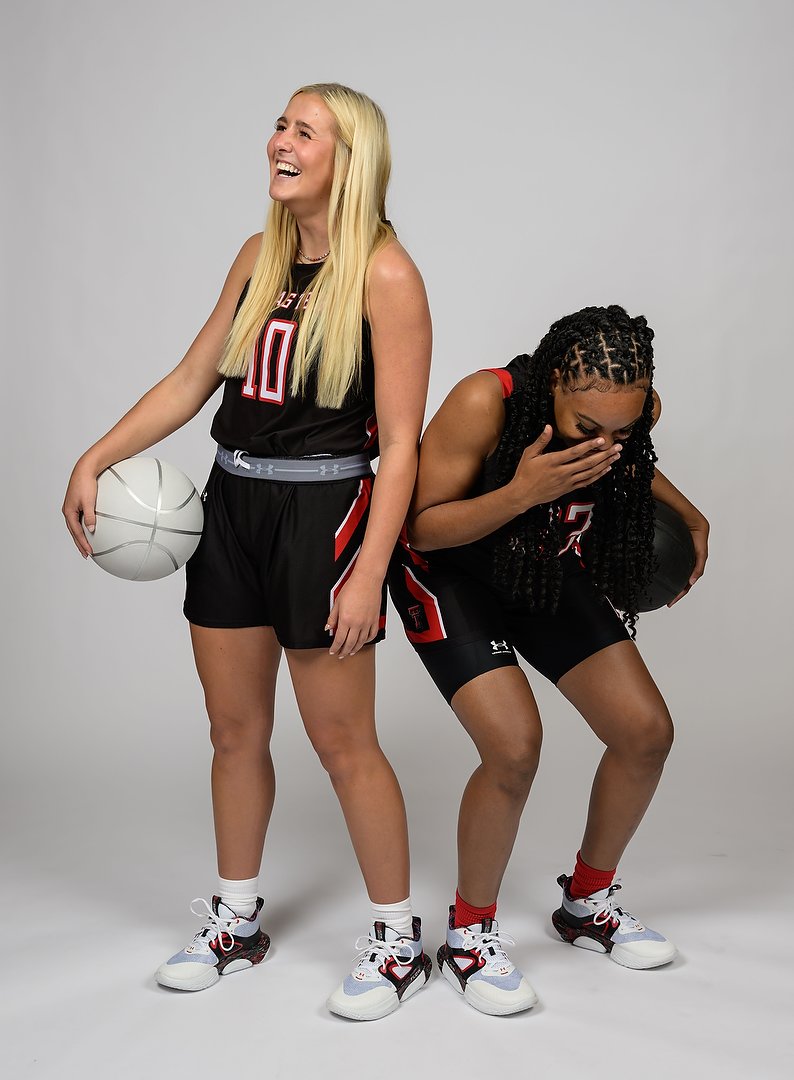
Sometimes the players cracked each other up, which also made a fun picture. In this case it’s Texas Tech’s Bryn Gerlich, left, and Bre’Amber Scott.
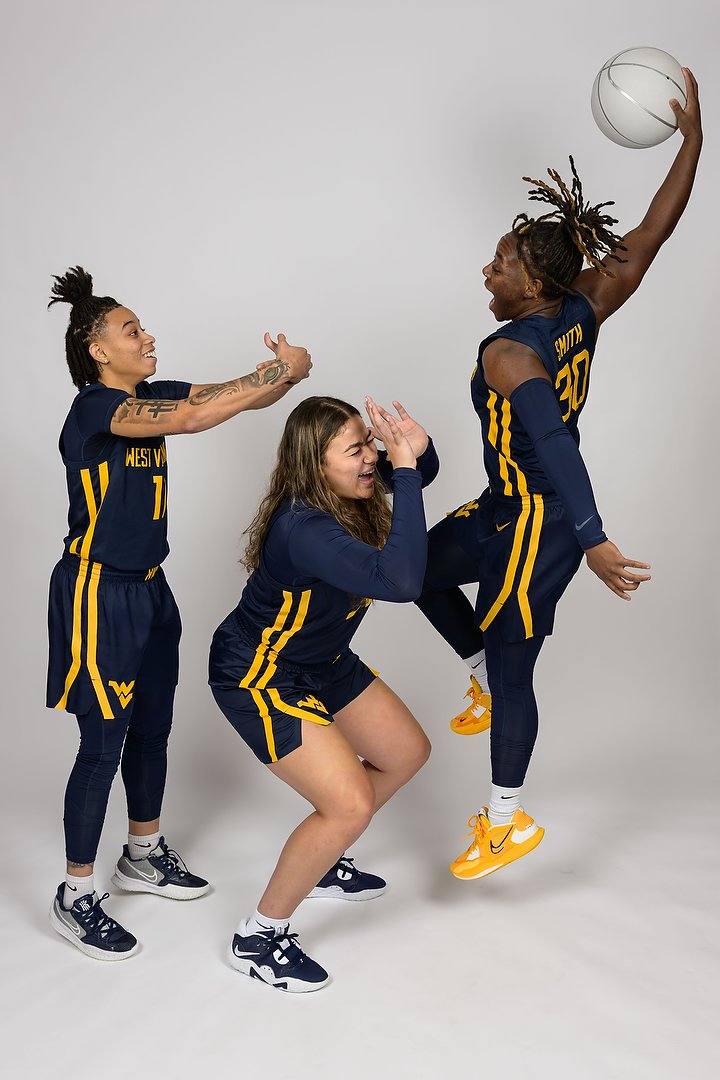
Some of them got more creative than others. West Virginia’s players wanted to create this scene, so it took a bit of work to fit it into the width of the white background. From left, JJ Quinerly, Kyah Watson and Madisen Smith.
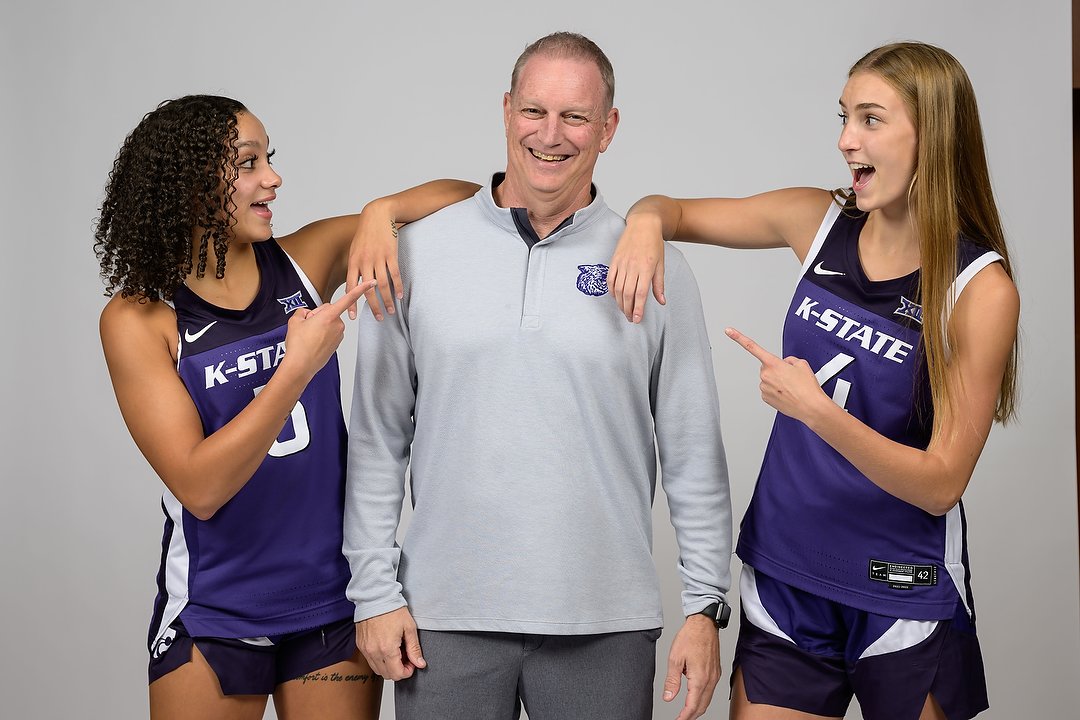
And again, if the coach and players wanted to have fun with each other, I was happy to let them do that. This is Kansas State: from left, Brylee Glenn, coach Jeff Mittie and Serena Sundell.
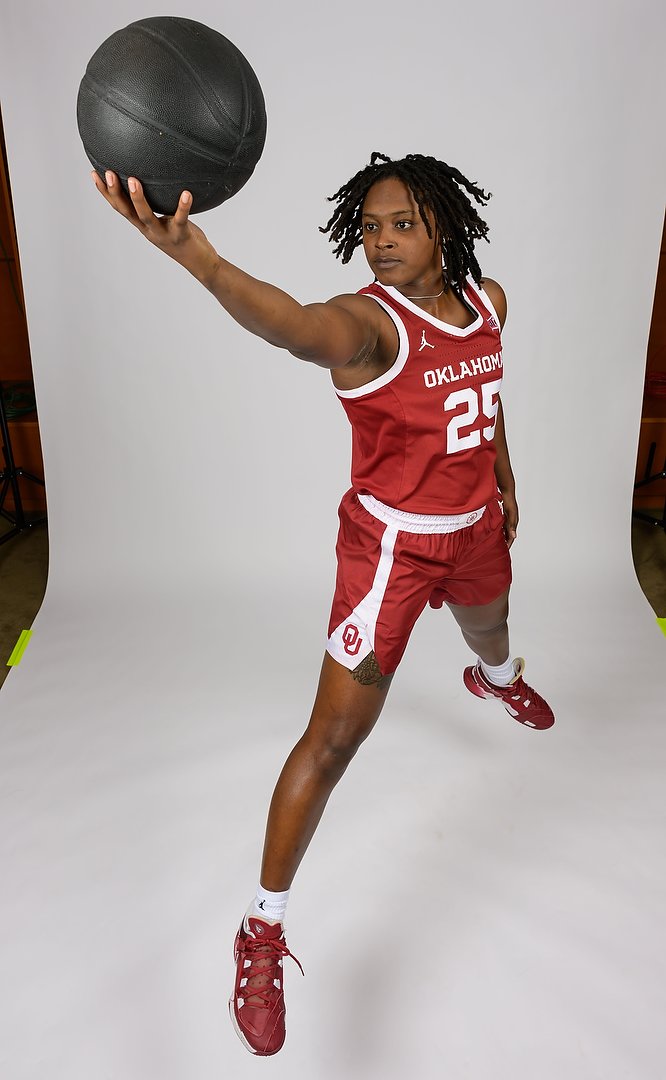
Despite being 9-ft wide, some shots extended beyond the seamless, like this one of Oklahoma’s Madi Williams. While I tried to avoid that happening, I knew that ESPN’s creative team wouldn’t have any problem extending the white background if they wanted to use the picture.
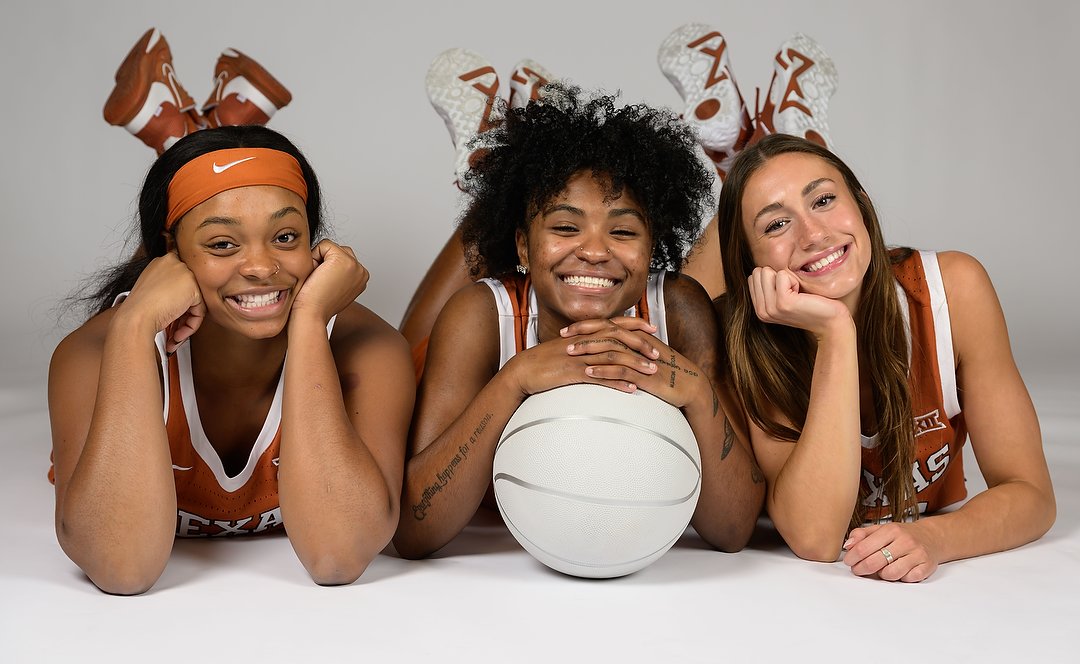
It was always great when a team, like Texas, came up with a unique idea that no one else had. That’s why these shoots were so much fun. Something different, and more than just portrait. From left, Aaliyah Moore, Rori Harmon and Shay Holle.
(If you like this story, please share it with your friends and let them know about the links on photography that I post on my business Facebook page. I’m also on Instagram. And if you’re curious about the workshops I teach, you can find them here. Plus, you can subscribe to this blog on my home page.)

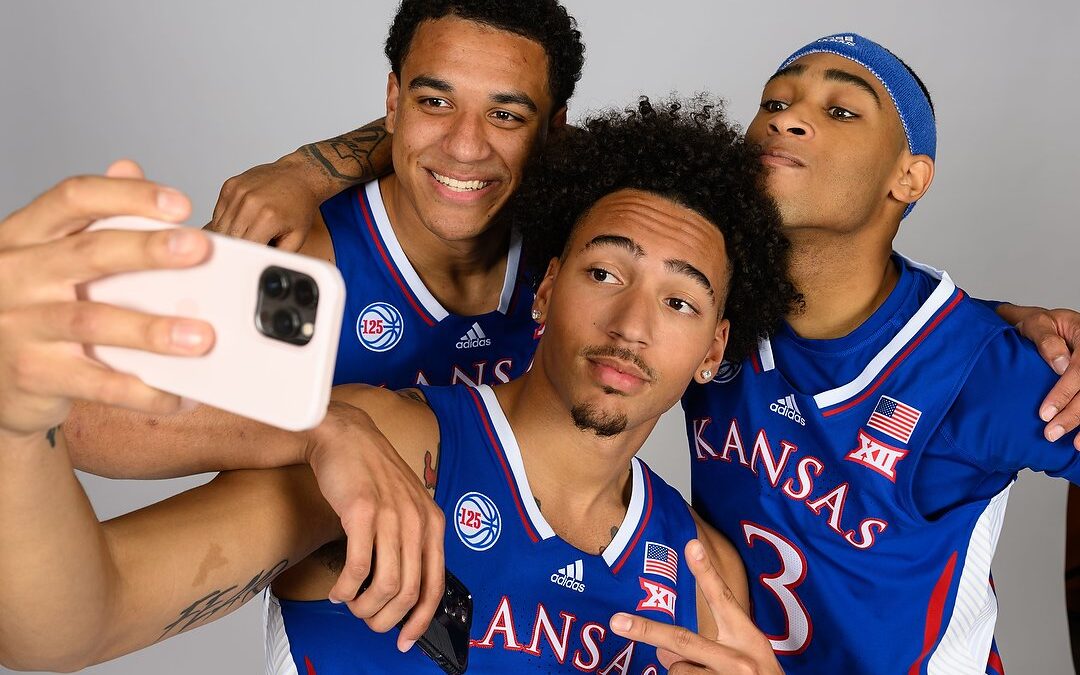
Reed, you make it seem so easy, so natural. Wonderful portraits of the individuals and groups
Great images, story and technique tips!